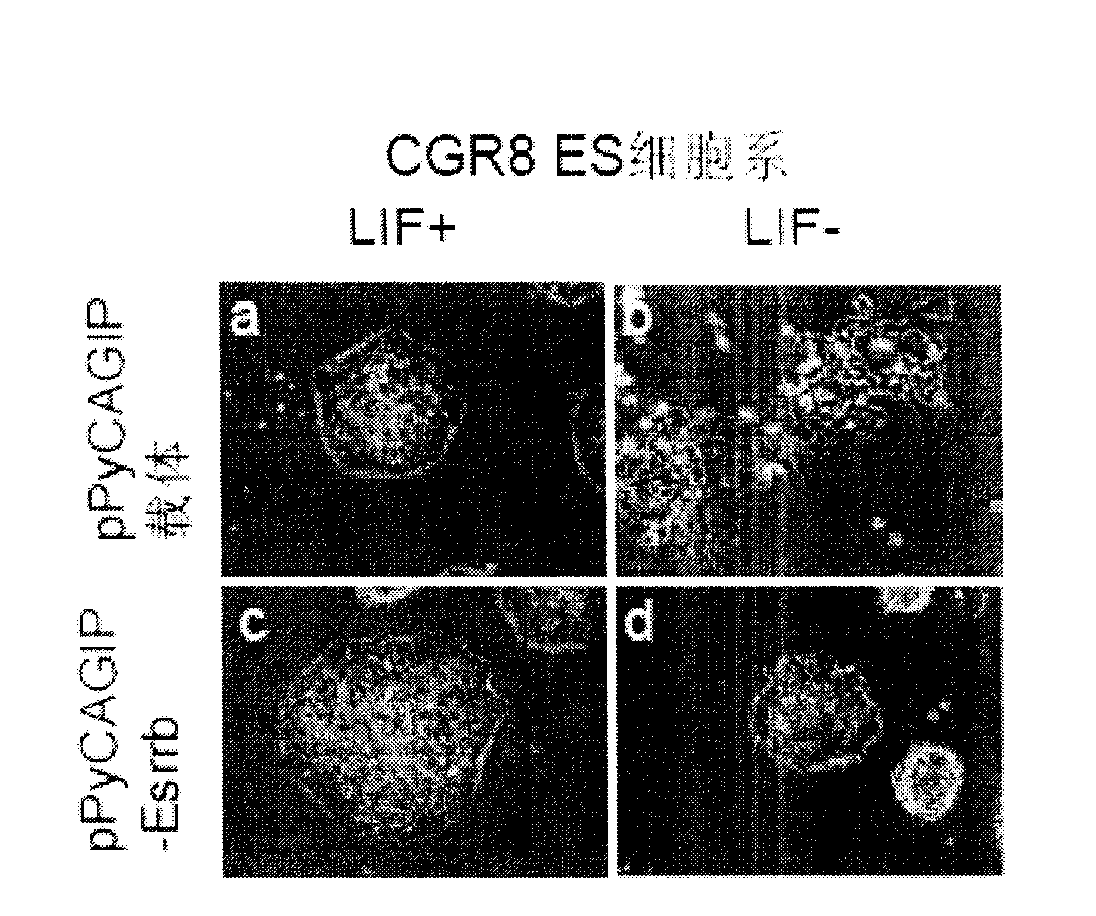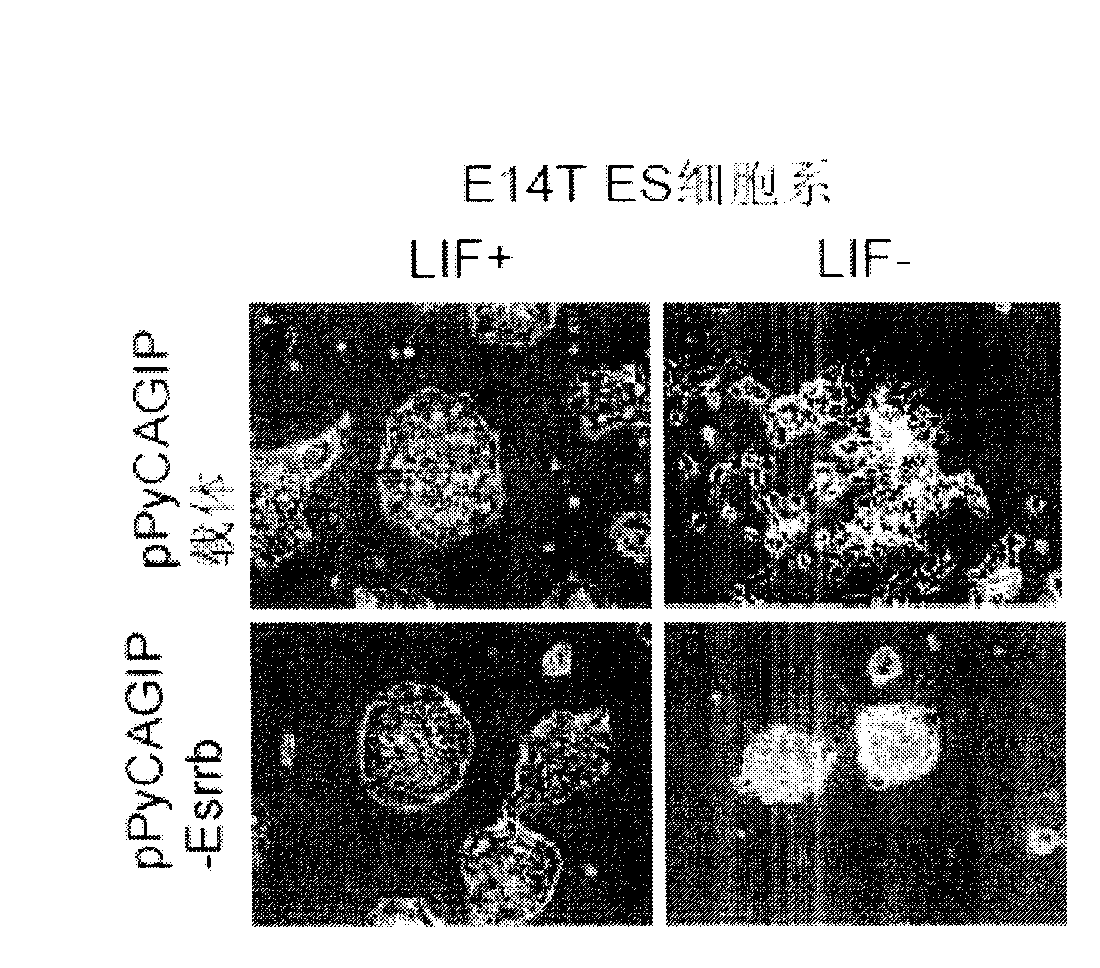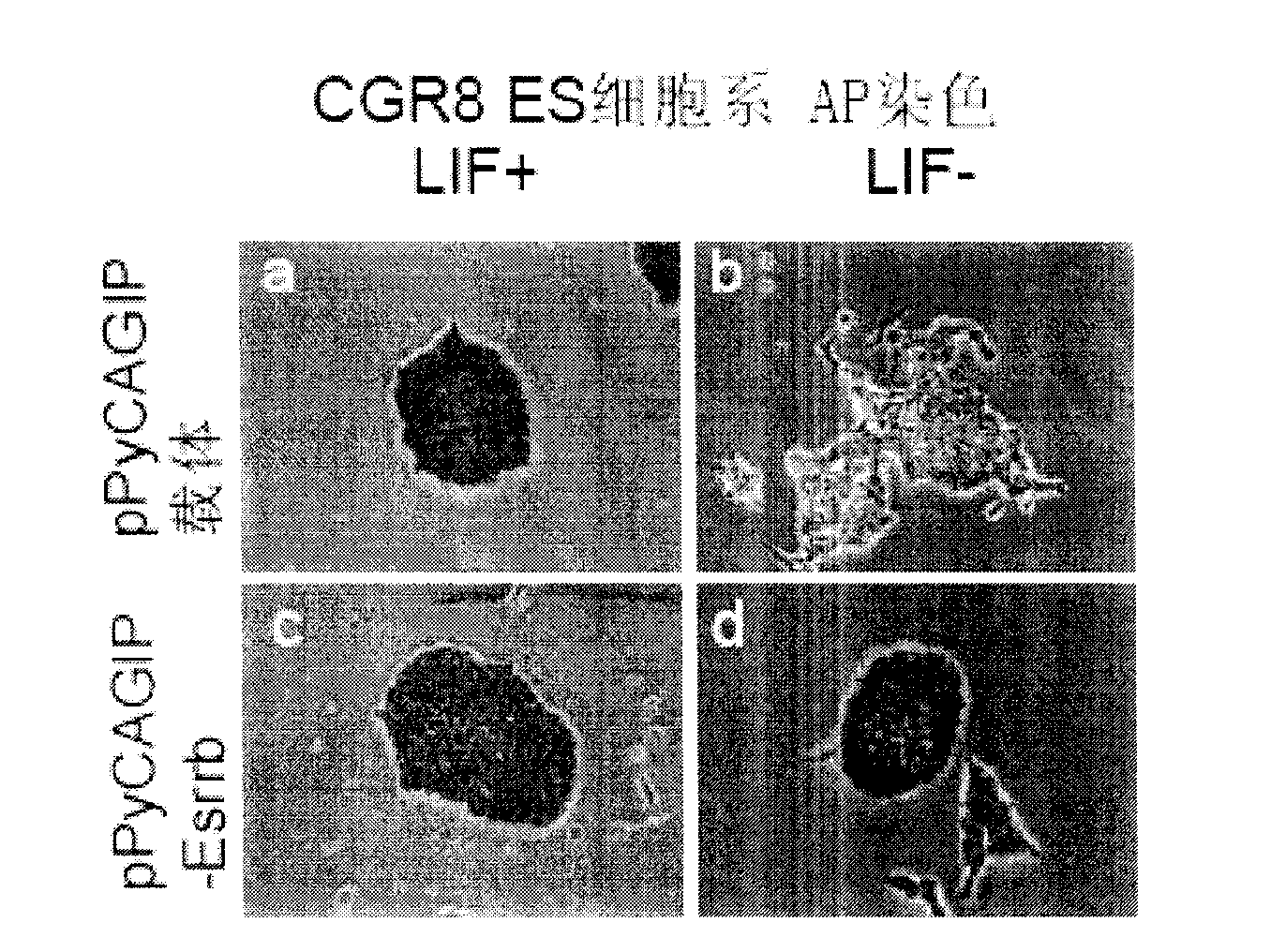Uses of estrogen correlated acceptor 2 in maintaining versatility of mouse embryo stem cell
A technology of embryonic stem cells and mouse embryos, applied in the application, introduction of foreign genetic material modified cells, measurement/testing of microorganisms, etc., can solve the problem that the molecular mechanism of stem cells to maintain pluripotency and self-renewal is not very clear, etc.
- Summary
- Abstract
- Description
- Claims
- Application Information
AI Technical Summary
Problems solved by technology
Method used
Image
Examples
Embodiment 1
[0029] Example 1: Culture of ES cell lines
[0030] Mouse ES cells (CGR8 ES and E14T ES) were cultured on 0.1% gelatin-coated substrates, supplemented with 20% fetal bovine serum FBS (GIBCO), 100 mM non-essential amino acids (Invitrogen, CA), 0.55 mM β-mercaptoethanol ( Sigma, St.Louis, MO), 2mML-glutamic acid (Invitrogen, CA), and 1000 units / ml human recombinant LIF (CHEMICON, CA) were cultured in a 37°C incubator (see Pan Guangjing et al., (2006) Faseb J 20(10), 1730-1732, Mitsui K et al., (2003) Cell 113(5), 631-642, Chambers, I et al., (2003) Cell 113(5), 643-655 , Pan, G et al. (2005) J Biol Chem 280(2), 1401-1407).
Embodiment 2
[0031] Example 2: Construction of Esrrb vector (SEQ ID NO: 1) and expression of Esrrb vector (pPyCAGIP-Esrrb) in ES cells
[0032] 2ug of total RNA was reverse transcribed using a reaction system with a final volume of 20ul (see Pan, G et al., (2006) Faseb J 20(10), 1730-1732) to obtain a cDNA library. The mouse Esrrb fragment was amplified using the primers in Table 1, and then recovered by agarose gel electrophoresis.
[0033] Table 1: Primers for cloning Esrrb fragments:
[0034] SEQ ID NO
[0035] Plasmids for the generation of ES stable genetic lines were constructed by inserting PCR fragments into the multiple cloning site pme I of the pPyCAGIP vector, that is, the pPyCAGIP vector was digested by pme I for 4 hours at 37°C, and then amplified from embryonic stem cell cDNA The mouse Esrrb fragment was ligated in the presence of ligase at 16°C for 4 hours to obtain the vector pPyCAGIP-Esrrb.
Embodiment 3
[0036] Example 3: Construction of stably transfected cell lines and observation of their morphology
[0037] with 10 3 Feeder-free ES cells (CGR8 and E14T) cultured in u / ml LIF (Chemicon) ES medium were planted in a 6cm dish, and 2ug of vectors expressing pPyCAGIP and pPyCAGIP-Esrrb were transfected. 24 hours after transfection, cells were diluted 1:100 and seeded into new 10 cm dishes for selection. Puromycin (2ug / ml, Invitrogen, CA) was added to the medium during selection. After 10 days of selection, the transfected ES cells were observed under an Olympus inverted microscope, as shown in figure 2 As shown, the stably transfected ES cell line integrated with the pPyCAGIP-Esrrb vector and the stably transfected ES cell line integrated with the PyCAGIP empty vector both showed typical ES cell phenotypes, and both showed strong AP (alkaline phosphatase) positive reaction. However, in the absence of LIF (interleukin growth factor), after 6 days of culture, it was found that...
PUM
 Login to View More
Login to View More Abstract
Description
Claims
Application Information
 Login to View More
Login to View More - R&D
- Intellectual Property
- Life Sciences
- Materials
- Tech Scout
- Unparalleled Data Quality
- Higher Quality Content
- 60% Fewer Hallucinations
Browse by: Latest US Patents, China's latest patents, Technical Efficacy Thesaurus, Application Domain, Technology Topic, Popular Technical Reports.
© 2025 PatSnap. All rights reserved.Legal|Privacy policy|Modern Slavery Act Transparency Statement|Sitemap|About US| Contact US: help@patsnap.com



